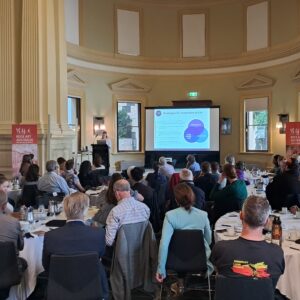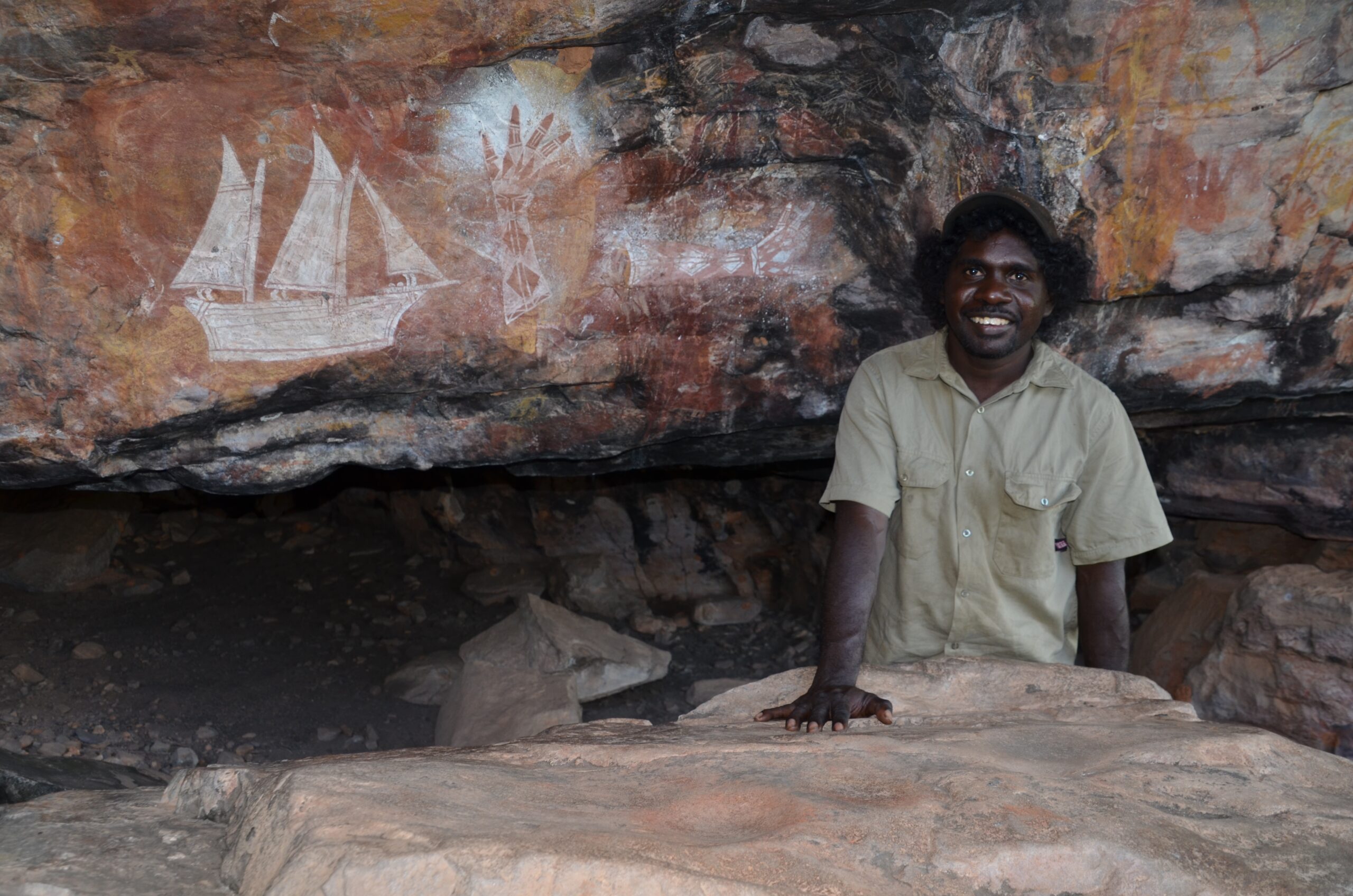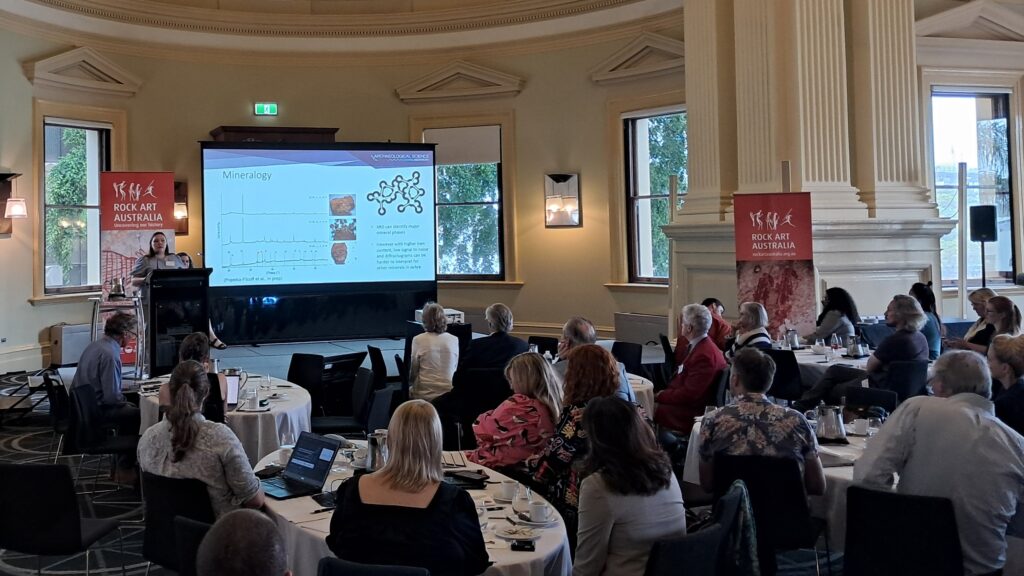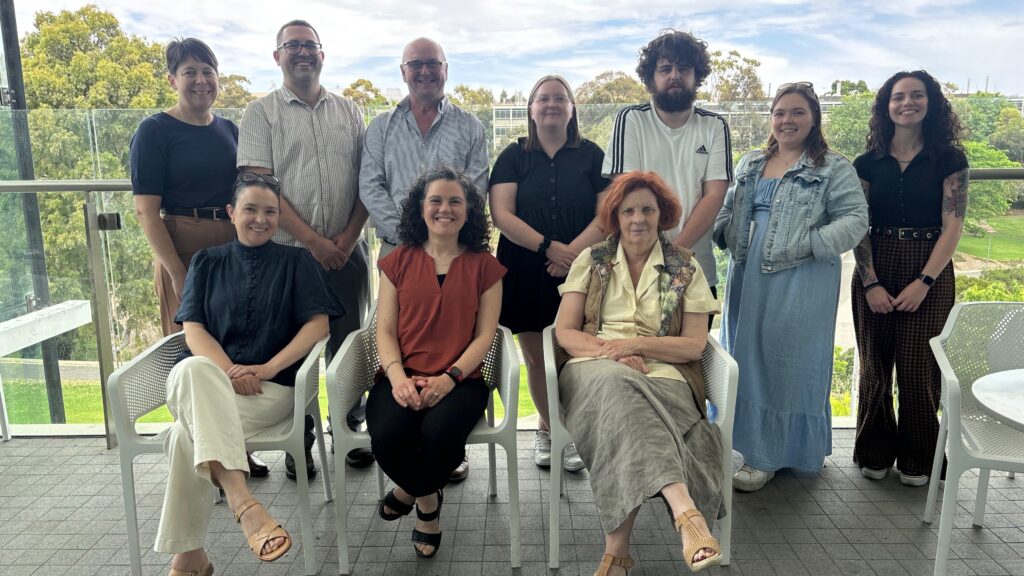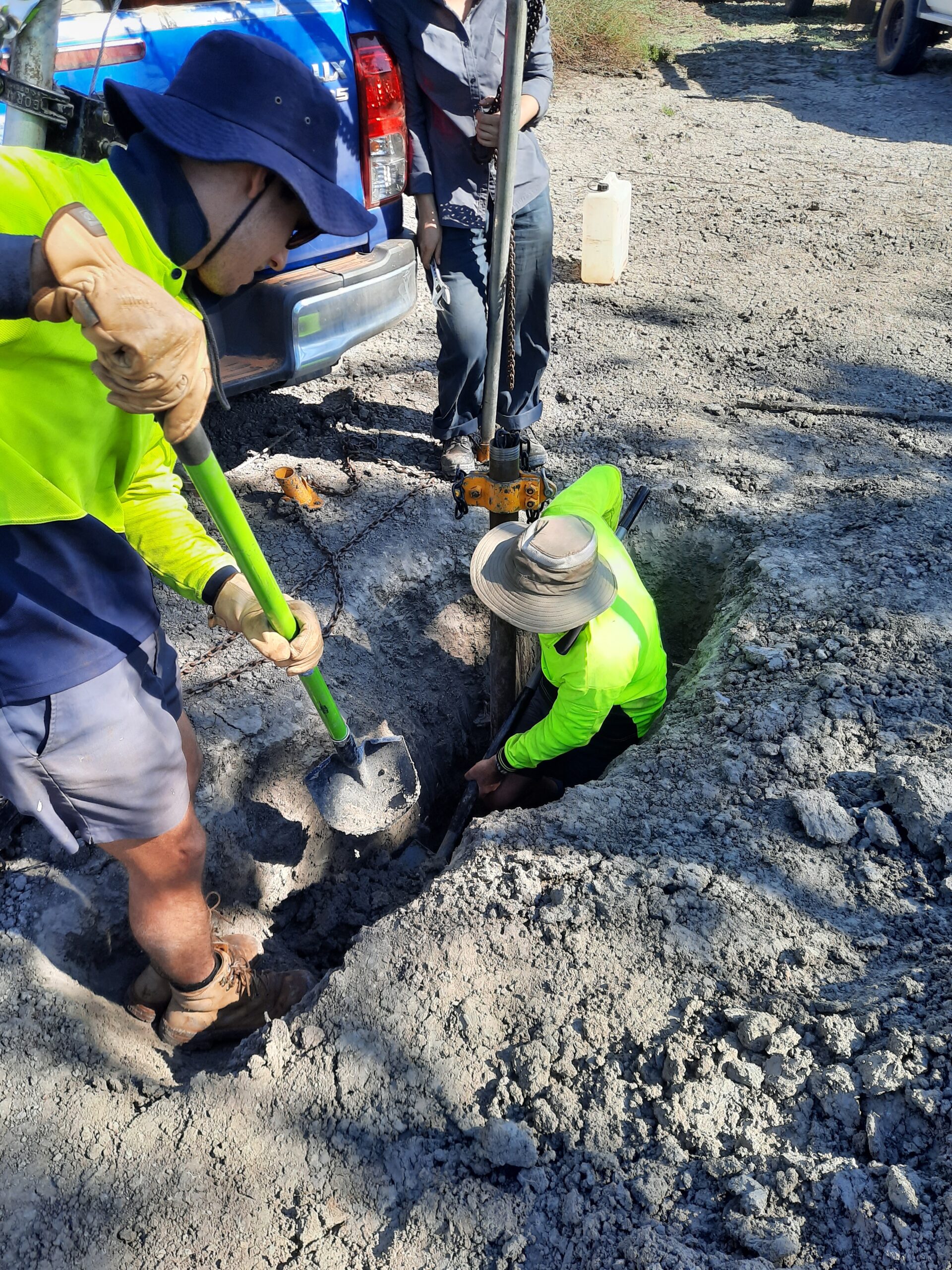Murujuga in northwest Western Australia is one of the world’s largest rock art provinces, with ~2 million engravings, and has recently been nominated for UNESCO World Heritage Listing. The art and other archaeological evidence in this landscape are an important record of human response to the changing climate following the last ice-age. 130 m of sea level rise following Last Glacial Maximum (LGM ~22 kya) transformed Murujuga from an inland range to a coastal archipelago.
At the 2024 SAC Annual research Workshop we discussed our efforts to develop palaeoenvironmental records of the changing environment, landscape, and resources since the LGM. This research is part of the ARC Linkage Project Dating Murujuga’s Dreaming in collaboration with Murujuga Aboriginal Corporation, which aims to use innovative scientific methods to date the rock art and stone features, and to contextualise the rock art sequence by providing detailed palaeoenvironmental records for the region. We presented our results so far from two palaeoenvironmental archives; laminated tufa carbonate and Tegillarca granosa shells.
The tufa, which is composed of calcium carbonate, formed in freshwater creeks over the past ~10,000 years. Intervals in deposition, accumulation rates and a range of geochemical and palynological evidence provides insights into changing hydroclimatic regimes and other environmental factors over this time frame. Initiation of tufa formation coincides with the influence of the ocean around the landscape, as the archipelago was forming. Greater tufa accumulation during the mid-Holocene indicates prevailing wetter conditions shifting to comparatively drier conditions in the late Holocene.
Tegillarca granosa shells are abundant in late Holocene middens at Murujuga. Stable oxygen isotope (δ18O) analysis of shell growth increments in archaeological shells provides a record of past sea surface temperature (SST) and seasonal change, providing both climatic records and insights into Aboriginal shellfish harvesting. The δ18O patterns in the Tegillarca granosa shells show that harvesting was greatest during autumn, with almost no harvesting occurring in summer months.
The seasonal harvesting patterns may be influenced by rainfall and availability of water in the landscape. Work is ongoing to refine and integrate the datasets and provide a more comprehensive environmental history for the region.
Primary collaborators: Murujuga Aboriginal Corporation, Amy Prendergast the University of Melbourne, Maurice Tucker, School of Earth Sciences, University of Bristol, Bristol, UK, Matthias Leopold, Mick O’Leary, Patrick Morrison, The University of Western Australia



